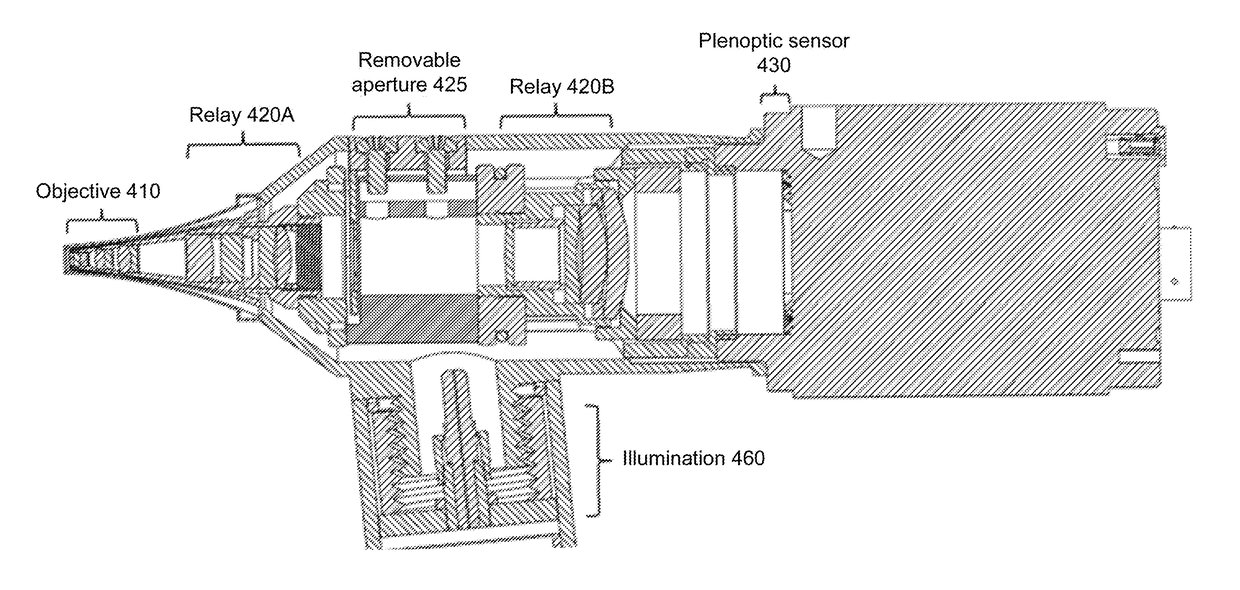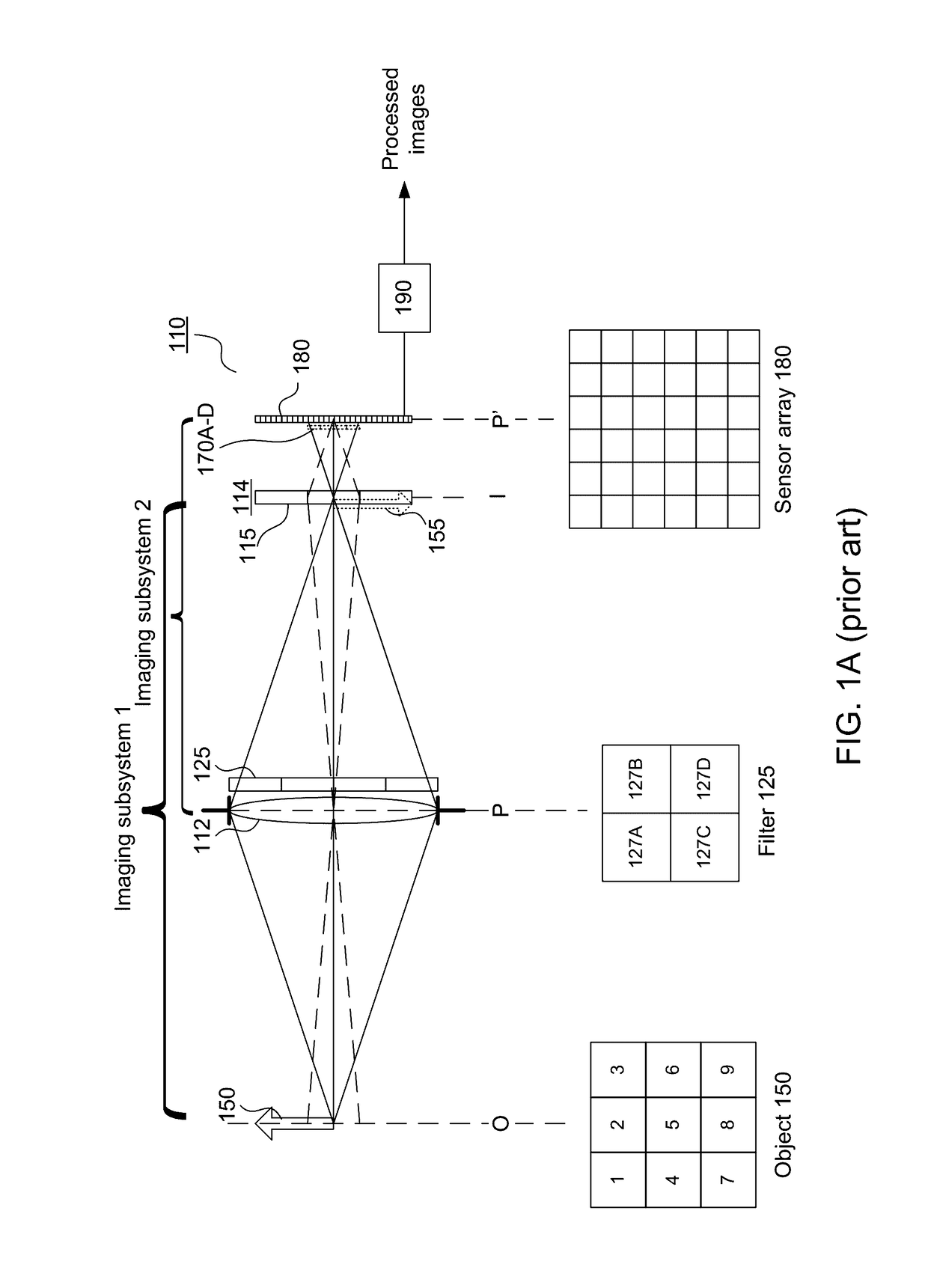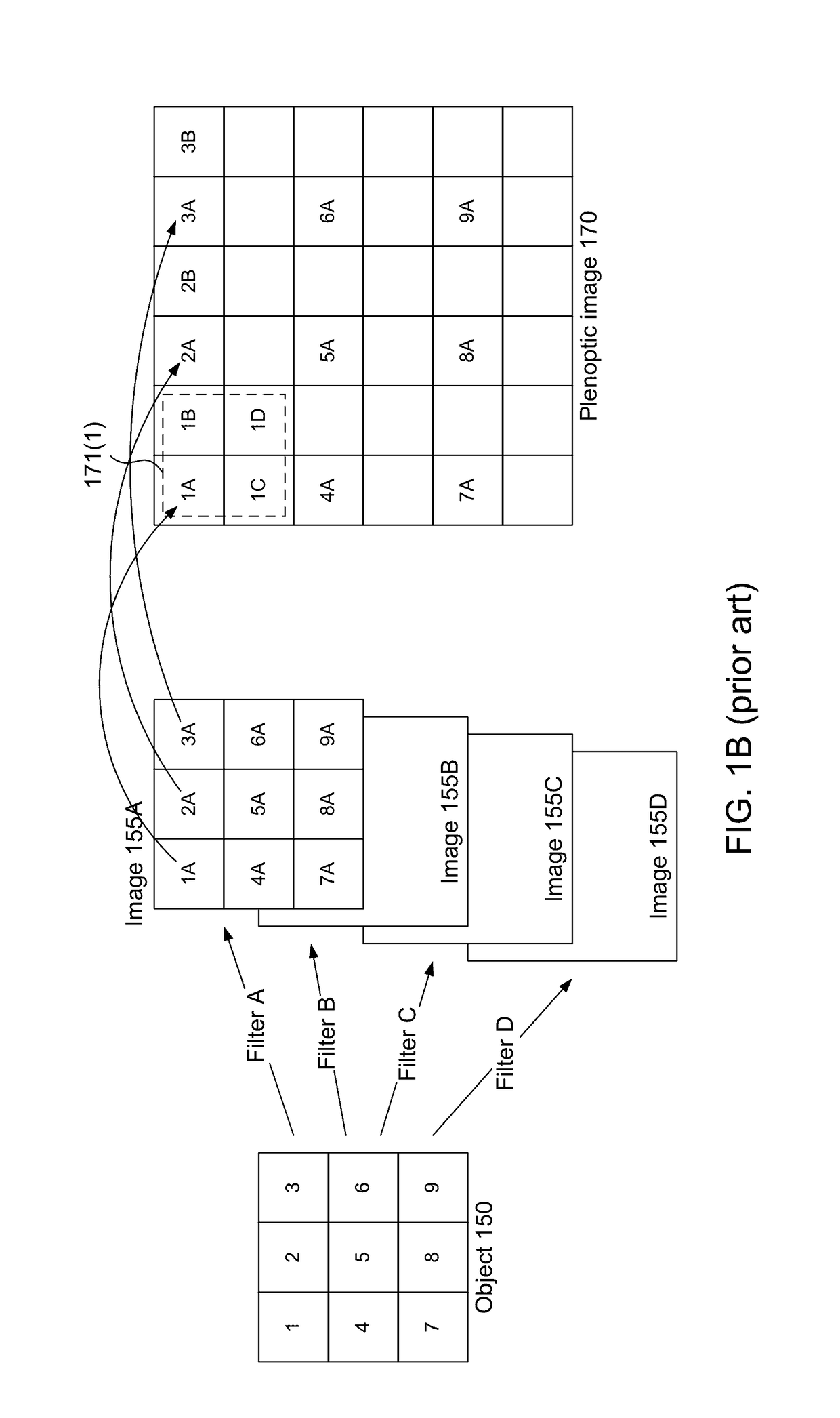Optical Design of a Light Field Otoscope
a technology of optical design and otoscope, which is applied in the field of light field otoscopes, can solve the problems of reducing the ability to assess slight reducing the ability to assess small differences in shape and color, and reducing the quantitative measurement of 3d shape or color of imaging sensors
- Summary
- Abstract
- Description
- Claims
- Application Information
AI Technical Summary
Problems solved by technology
Method used
Image
Examples
example optical design 1
[0051]FIGS. 4A-4D illustrate an example design for a light field otoscope. FIG. 4A shows the entire optical train. This design includes three lens groups: an objective lens group 410 and two relay lens groups 420A, 420B. FIG. 4B is a ray trace of the objective 410. The objective lens group 410 contains a pupil plane P1 towards the front of the objective lens group, so that object-space NA and FOV are maximized while reducing vignetting. In this example, the pupil plane P1 is near the front of the front lens of the objective lens group 410. An image is formed at the rear of the objective lens at image plane I1. Chief rays in the image-space are near telecentric, creating a distant exit pupil that is re-imaged by the following relay lens group 420A. A working distance of 15-25 mm is determined by anatomical constraints of the ear canal. The FOV of 10-20 mm at nominal working distance is selected to image the TM and surrounding ear canal. The overall size of the lens group is constrain...
example optical design 2
[0060]FIGS. 5A-5B illustrate another design for the objective lens group of a light field otoscope. The rest of the design is based on the same principles as shown in FIGS. 4A-4D. FIG. 5A is a ray trace through the objective lens group 510. This design consists of two lens groups, which are separated by a physical aperture. The first negative lens group 512 is a meniscus lens, which collimates the incident light rays into a pupil P1. The objective lens group 510 contains a pupil plane P1 towards the front of the objective lens group, so that object-space NA and FOV are maximized while reducing vignetting. In this example, the pupil plane P1 is near the back of the front lens of the objective lens group 510. The second positive lens group 516 consists of two achromatic doublets, which bend light rays and form an image at an intermediate plane I1. As in the design of FIG. 4, the resultant intermediate image is then relayed to the plenoptic sensor by two relay lens groups, which are no...
PUM
 Login to view more
Login to view more Abstract
Description
Claims
Application Information
 Login to view more
Login to view more - R&D Engineer
- R&D Manager
- IP Professional
- Industry Leading Data Capabilities
- Powerful AI technology
- Patent DNA Extraction
Browse by: Latest US Patents, China's latest patents, Technical Efficacy Thesaurus, Application Domain, Technology Topic.
© 2024 PatSnap. All rights reserved.Legal|Privacy policy|Modern Slavery Act Transparency Statement|Sitemap



